Civilization’s love affair with wine is nearly as old as civilization itself. In the East, Japan’s sake “rice wine” is just one of the many wonderful traditional drinks associated with the island nation. Some of the oldest records we have from Mesopotamia pertain to the brewing and fermenting of beer and wine-like beverages.
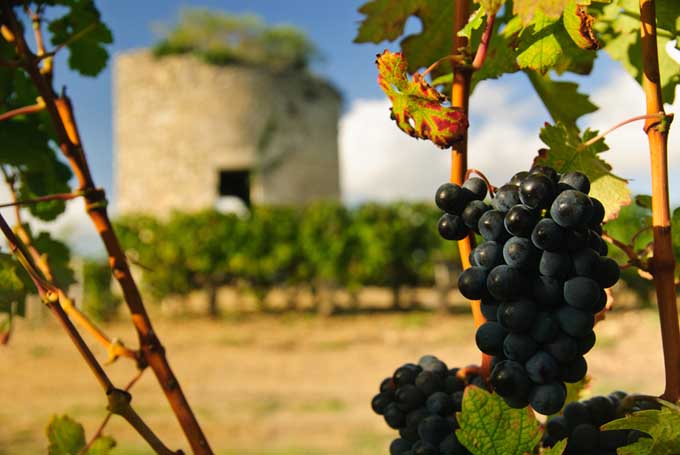
The Bible gives us many references to wine, as do the many great foundational plays and poems of the Greeks. Indeed, the Festival of Dionysus in Athens saw two great Western traditions—wine drinking and popular entertainment, here in theatre—take root at the same time.
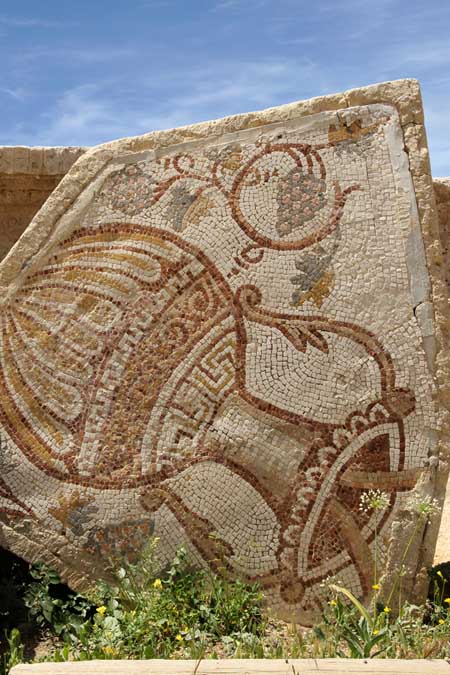
There are some that view the rise of agricultural products as the dawn of civilization, as the whole process of storing grains, plants and fruits—such as those needed for alcoholic beverages—could have, over time, led to permanent states.
[the_ad_group id=”1056″]
From soaring Italian operas and pieces of Baroque art to the coy drawing rooms of 1800s England to the battlegrounds of WWI.
Wine and civilization—no matter the era, it’s simply a winning, joyous mixture.
But what about actually buying wine? That’s another question. It’s still joyous, yes, but it’s anything but simple. There are literally hundreds of different varieties in the world, and that number only increases when you factor in different vintages and all the various nuances that are all part and parcel of the greater wine world.
With so many choices, however, how can you be sure that the brand or vintage that you’re choosing is a winner? After all, wine isn’t exactly the most inexpensive of beverages, alcoholic or otherwise, and shopping on a budget is more than just an ancillary skill—it’s an absolutely necessary one. Add to that the fact that proper selection can make or break a first date or savvy soirée, and you have a lot of pressure to pick out the perfect bottle of bubbly or the finest of “fine merlots” to seal the deal!
Never fear!
Here is a quick, seven step starter guide to help you find the best wine for you.
1. AUSTEN VS. HEMINGWAY—DELICATE WHITES VS. RUGGED REDS
Jane Austen and Ernest Hemingway. They’re two of the greatest writers in the history of the English language, they couldn’t be more different—and neither could their depiction and attitudes towards wine. On the one hand, Jane Austen is one of if not the most revered writer of English romances, as her works take us from lush countryside estates to decadent ballrooms and beyond, all while the fates of characters such as Lydia and Lizzie Bennet and Mr. Darcy from Pride and Prejudice all hang in the balance.
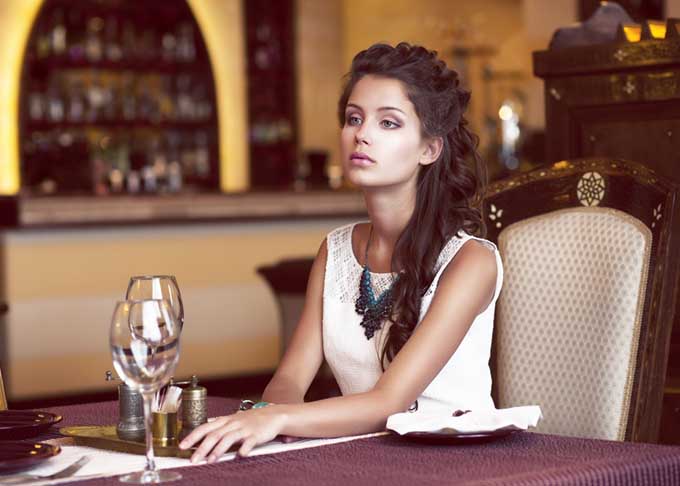
The world of Jane Austen is one of delicacy—one wrong whispering word here or there and entire lives may be ruined…along with the oh-so-luxuriant and finicky white wines that are a staple of her English drawing room dramas.
Ernest Hemingway’s works are completely opposite—they’re rugged, raw, and feature characters like the wounded Jake and inaccessible Brett from The Sun Also Rises who are, as was Hemingway himself, products of the First World War and, later, the Spanish Civil War. It should come as no surprise, then, that Hemingway’s novels have a thing for raw, powerful red wines, especially Spanish reds.

This is a great way to look at the age old debate between white and red—which of those authors and attitudes seem more in keeping with your own tastes? Are you looking for a variety that exudes class, wealth, status, subtlety, and simply oozes prestige? If so, you might want to start your journey by seeking out some French whites. Conversely, are you looking for a style that’s raw, powerful, more potent and arguably hardier and less delicate? Then you might do well to start researching red varieties.
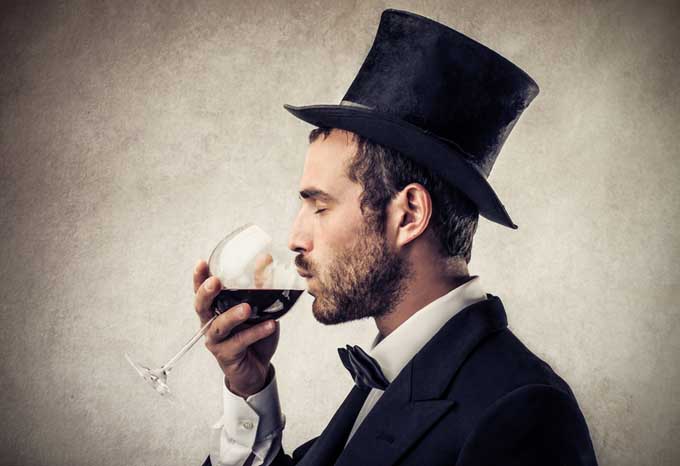
There are, of course, exceptions to these rules—there are some blunt Austen figures and delicate Hemingway characters, and likewise, there are certainly some raw, potent whites and tricky, subtle reds—but as a broad, generalization of a rule, if you’re completely knew to the world of wine, don’t know a thing about the age-old reds vs. whites divide, and are looking for some guidance, let this characterization be your guide. If your personality’s more suited to regency balls and high society, white wines may be your thing, whereas if you’ve a more combative personality, red might be a better bet.
2. SCINTILLATING OR SIMPLY ODIOUS—SNIFFING OUT A BAD BOTTLE
Some authors simply own words, and nobody made the word “odious” more her own than our very own aforementioned Ms. Austen, and you too can make this word and concept your own to help you sniff out a bad bottle and steer clear. While Austen almost always uses the word “odious” in a figurative sense, we’re using it a tad more literally.
There’s a lot of attention given to “developing your palate” when it comes to wine consumption, but developing a keen sense of smell can do wonders for your ability to pick out the good varieties from the bad. Your olfactory sense—that is, your sense of smell—is connected to an extent to your sense of taste. It’s no coincidence that food that smells good to you usually tastes good.

You can therefore consider your sense of smell a sort of pre-taste taste test of sorts—if you’re at a restaurant and order a bottle, it’s common practice to take a subtle whiff of your freshly-poured glass of wine before taking a sip. You can also smell the cork to inspect for freshness, but the nuance and debate around that practice is best left for another day.
What matters for our purposes is the ability to catch a wine’s scent and be able to tell if it’s scintillating or simply “odious.” The best way to go about doing this is to A) do your research and know what ingredients and “notes” should be forming the aroma, and B) going with your gut. If you’ve just ordered a variety that’s supposed to be sweet and have a blackberry scent to it, and it instead has an odor that’s of another berry variety, or doesn’t smell “sweet,” then that should be a warning flag.
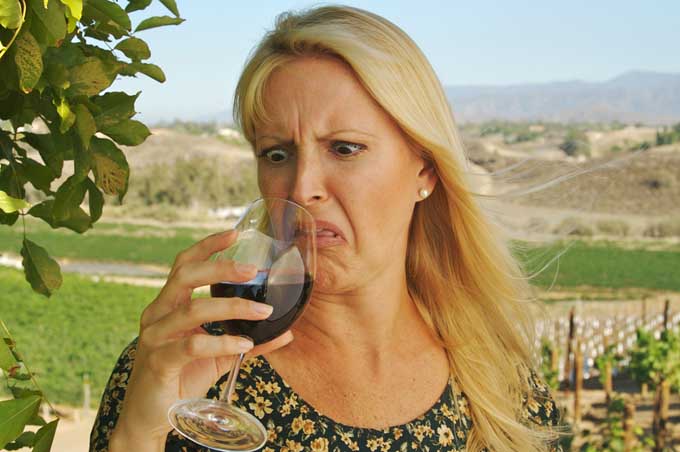
If the prospect of researching what a wine’s aroma should be before consumption sounds daunting, don’t worry—chances are good that, unless you’re ordering a truly expensive, high-quality brand, or else are at a tasting or other prestigious wine-centered event, you can simply go with your gut feeling. If you don’t like the smell, chances are it won’t go down well.
3. AROUND THE WORLD IN 80 DRINKS—LOOKING AT WINE REGIONS
Whether you plan on coming to know and love wine, or just want to show off for an evening to impress your guests, host, or maybe even your date, having a basic knowledge of wine regions is generally a good idea.
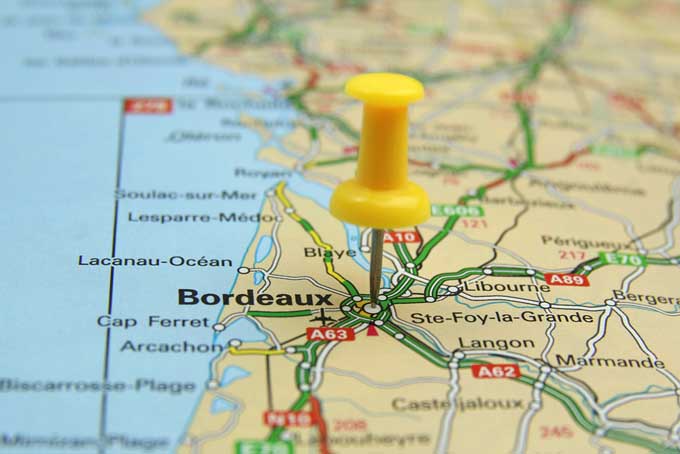
Now, that doesn’t mean that you have to know every last little area in Spain that grows the right type of grapes, or be able to tell the Bordeaux region from the Champagne region in France. Indeed, if you don’t know the difference, don’t overreach—to borrow Austen’s word again, there is nothing more “odious” than someone trying to show off and failing miserably and all too publically.
4. TOASTING THE HOST—THE RIGHT WINE FOR THE RIGHT OCCASION
In addition to all those rules above, you’re going to want to make sure to pick the right wine for the right occasion. Once again, we return to our basic Austen vs. Hemingway dichotomy—are you going to a fancy wedding, or something similar? That may not be the world of Austen per se, but Austen-esque white wines might be more appropriate.
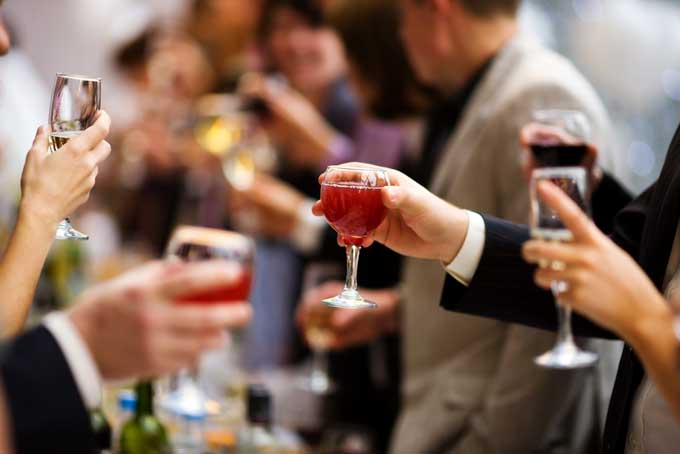
On the other hand, if you’re looking to, say, party with friends, get a soirée buzzing, or looking for a raw and passionate beverage to share with that special someone? That might well be a job for merlot, pinot noir, tempranillo, or one of the other great reds out there. What’s more, you’re going to want to take your tastes and health into consideration, as well as those of others.
Red wine is, to again generalize, usually a tad better for your heart than white. Some people get headaches with red, but are OK with white, and vice versa. Knowing who and what kind of occasion you’re shopping for can go a long way towards helping you find the right style and taste.
5. POPPING THE CORK—EXPLAINING CHAMPAGNE
Champagne is a very special case here and deserves its own little subsection. To begin with, champagne is the exception to that “anti-snobbery” rule above, wherein we said that while knowing wine regions can be helpful, being exact isn’t always necessary. With champagne, you generally want to be exact, and want to make sure that you’re buying champagne from the champagne region in France or, if that’s not possible, a high-quality “substitute,” such as Napa. That being said, as the drink really is named for that region, you really should make every effort possible to buy authentic Champagne-region champagne.

What’s more, while it probably goes without saying, it does deserve a quick mention if you’re a complete novice here—take care when popping the cork of a champagne bottle, and once you’ve popped the cork, don’t bother saving that bottle for another occasion. Given the bubbly nature and chemical composition of champagne, it really is a one-and-done kind of drink.
The drink is perhaps the epitome of that Austen-esque delicacy—you have to chill it just perfectly, pop the cork and pour the drink with the utmost care, and once you do, the sensitive, delicate balance that makes champagne so wonderful will begin to deteriorate in just a few hours, so it really is a one shot deal.
6. OF SCREW TOPS AND FLAT BOTTOMS—ROOKIE MISTAKES TO AVOID
Now, let’s go over a few rookie mistakes. As you might have guessed, two of the biggest ones are to buy bottles with screw tops rather than corks or flat bottoms rather than the kind of indentation you’ll find at the bottom of most quality bottles.
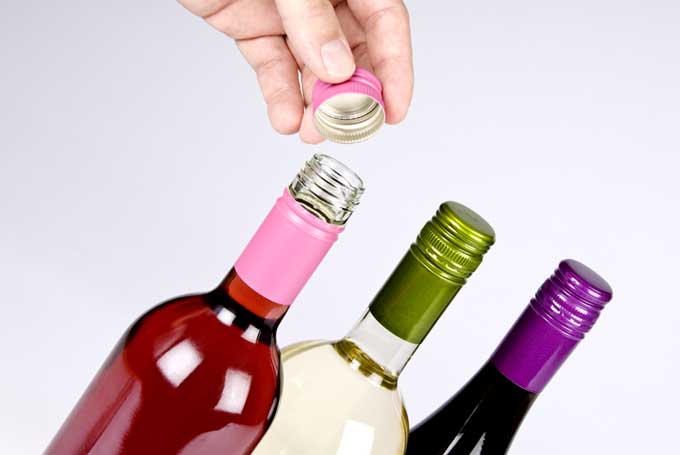
Both screw tops and flat bottles are instant indicators of cheap, low-quality beverages, and not only are they lacking in the prestige you generally want when ordering wine, but given just how cheap some of this swill is, drinking the wrong bottle can sometimes make you sick. In addition to all of that, you’re going to want to avoid large “jug-like” bottles.
That’s yet another sign of putting quantity ahead of quality, and trust us when we say that’s never a mistake you want to make with wine.
7. AUSTEN VS. HEMINGWAY II—WHY WE DRINK WINE IN THE FIRST PLACE
And so we come full circle to complete our quick guide with a return to those masters of the written word and wine world, Jane Austen and Ernest Hemingway, to ask the all-important question—why do we drink in the first place? There are several reasons, ranging from enjoyment to the fact that the drink represents status and class to romance and so on…which reason best suits you?
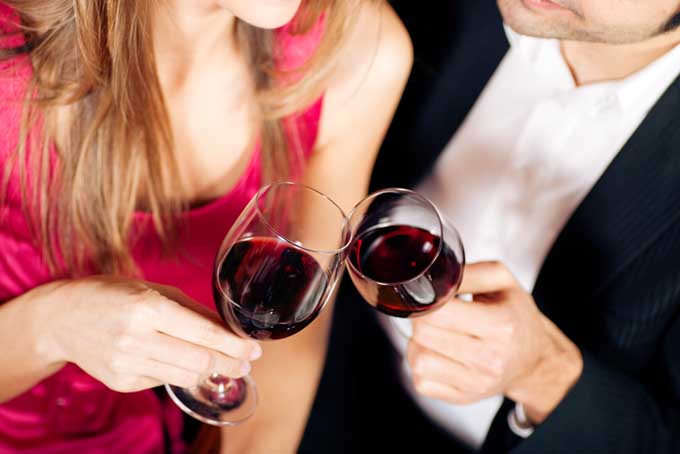
The attitude and reason you have for buying any bottle is going to center around the answers to this question in at least some capacity. We’ve seen all the different dos and don’ts surrounding the practice of wine buying and consumption, but which elements, in particular, resonate with you?
The reason you’re drinking is going to determine the degree to which the above factors matter to you. Are you trying to impress a date, or show off some class and knowledge at your firm’s next business luncheon or dinner party? Then you might well want to emphasize those finer points. Are you just looking for a raw night of passion with that special someone? Then your choice of wine is still going to matter, but the way in which you present it—and yourself—are likely to have a far greater impact.
Either way, Austen or Hemingway, white wine or red, like a fine selection at a bar or moonlit café, the choice is yours.
Cooking with wine can be just as enjoyable as drinking it! Read our 9 essential tips for cooking with wine, to make amazing, richly flavored meals.
And don’t forget about the glasses! Make sure you have the best option for the wine you will be soon enjoying with our guide to the best glassware.
Wine has a full history, spilling over into both the present and the past. For a glimpse at both in relation to wine and food culture, make sure to check out Foodal’s first podcast, and interview with author Simran Sethi and her book Bread, Wine, Chocolate: The Slow Loss of Foods We Love.
About Lynne Jaques
Lynne is a stay-at-home mother of two boys. As a former US military officer and the spouse of an active duty US military member, Lynne enjoys traveling the world (although not the moving part!) and finding new cuisine and methods of preparing food. She also has the habit of using parenthesis way too much!




The world of wine is very confusing indeed, It’s really hard to find basic information on wine selection. There’s some great hints and tips here and I feel more confident about selecting a bottle to accompany tomorrow night’s dinner already!
This is a helpful guide Lynn. There is so much I didn’t know. The flat bottom I had not paid attention to and I did question if the cork was a sign of quality; so now I know. Your writing is beautiful, and I love the references to the famous authors.
I especially appreciate the champaign section. I have had some bad experiences there.
I actually love wine with various flavors and now I know how to make some informed choices. I feel very empowered!
I’ve always been a firm believer that the best wine for you is the wine that you like best. Alton Brown said so, and I admire the man therefore I heartily take his advice. Don’t get intimidated with the different wines; most of these are differentiated just on the location, and sometimes the containers they were fermented in.
On a personal note, I’ve always been partial to port myself. A good bottle of port, some Stilton cheese, and a lit cuban cigar between my fingers is all I need.
Actually, about headaches — it’s not so much “personal” as it is caused by components in the beverage. Alcohols that are clear (such as vodka and white wine) will cause less of a hungover effect than darker alcohols (such as scotch and red wine!). It’s the congeners and all (also about the age of the alcohol).
Though I tend to gravitate to white wines and rosés because it is much more common to find fresh, fruity and sweet wines in this vein — and it fits better the sort of food I cook! I actually have no problem with screw-tops. I know they are less classy to the world at large, and great wines don’t have screw-tops (obviously, since you cannot age them this way), but I’ve had many very decent wines with screw tops, so I’ll stick to defending them a while! 🙂
I am definitely a wine-newbie, yet I consider myself a wine snob because I demand quality. Going to the store to buy wine brings me such excitement, but if I do not prepare myself I get very confused between picking the right bottle. I am eager to learn about picking out quality wine. I really like this article, there are so many things mentioned that I didn’t know. I love how you compared wines with Austen & Hemingway; I now want to reread their novels with the “right” glass of wine in hand.
I am certainly one who falls into the Hemingway camp here. Still, you make a great case for being a bit more open about my selection. Maybe I will even have a glass of white with dinner tonight (maybe). I think it is really true what Austen says about publically humiliating yourself to try to appear knowledgable. I have a pretty decent grasp on Spanish wines, but I have tried to discuss French wines and appeared quite odious. Good advice. What would be a good white for a guy trying to convert from the rugged red?
With regards to corks I feel red wines would go with this idea however nowadays white wines are normally stored in screw cap bottles. I believe the wine world just like everything else is progressing and moving. I currently live just south of Bordeaux where good wine is very cheap to find. Luckily I like red wine because I must say that any local white wine I have tasted here is VERY sweet. I like sweet things but I can’t seem to drink more than a glass without it feeling sickly. Of course the red wines are incredibe but then again Bordeaux is well known for their red wine not their white !
Hey, I love this wine guide, thank you for sharing. I really like wine, but unfortunately don’t know much about choosing the right one. The idea of comparing Austen and Hemmingway was genius and a great way of simplifying for all of those who don’t know much as me.
I was wondering if you could maybe recommend some brands of white and red wine you’ve tried and maybe describe if it’s a soft delicate wine or a stronger one. What about the year of the bottles and all that stuff. I’m really rooting for a “Wine Guide 2.”
Well I am not the biggest wine drinker out there, but if I had to choose of the first two I would have to say that I go with the Hemingway style of drinking. I also would go with the Hemingway style of literature, but we can save that for another day. I like red wine over white, and the richer the better…I just need to make sure to brush my teeth after I have had a bit. Good stuff, and thanks for sharing.